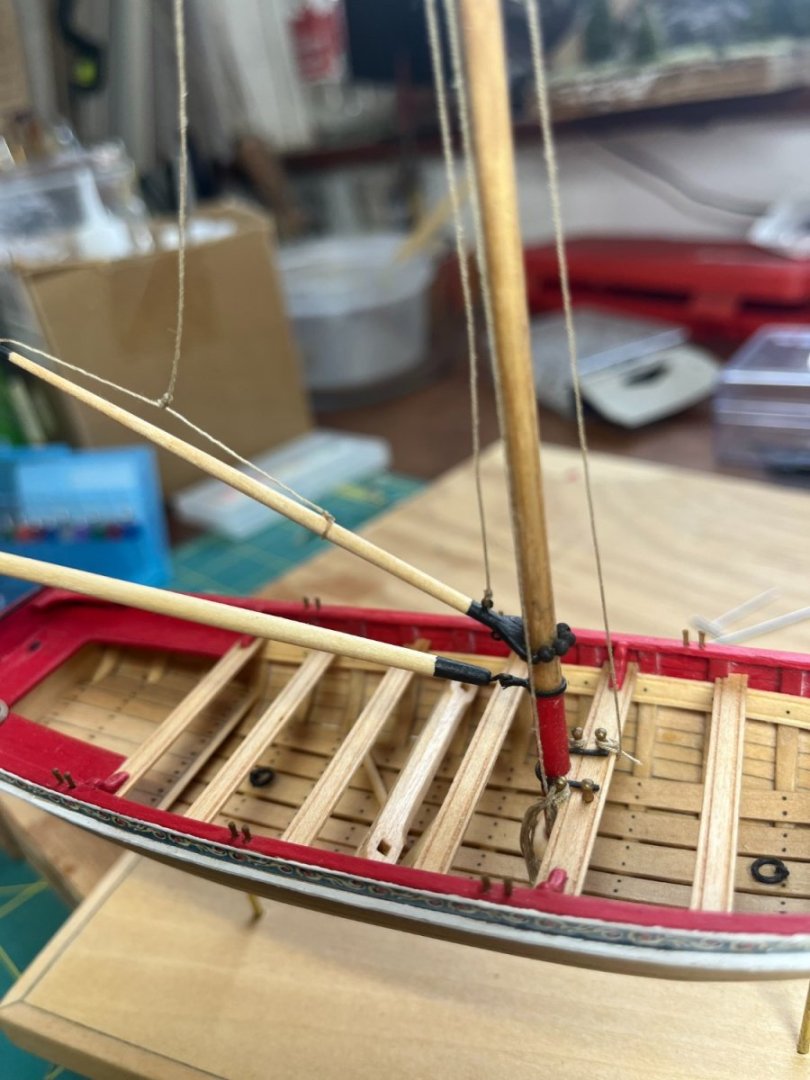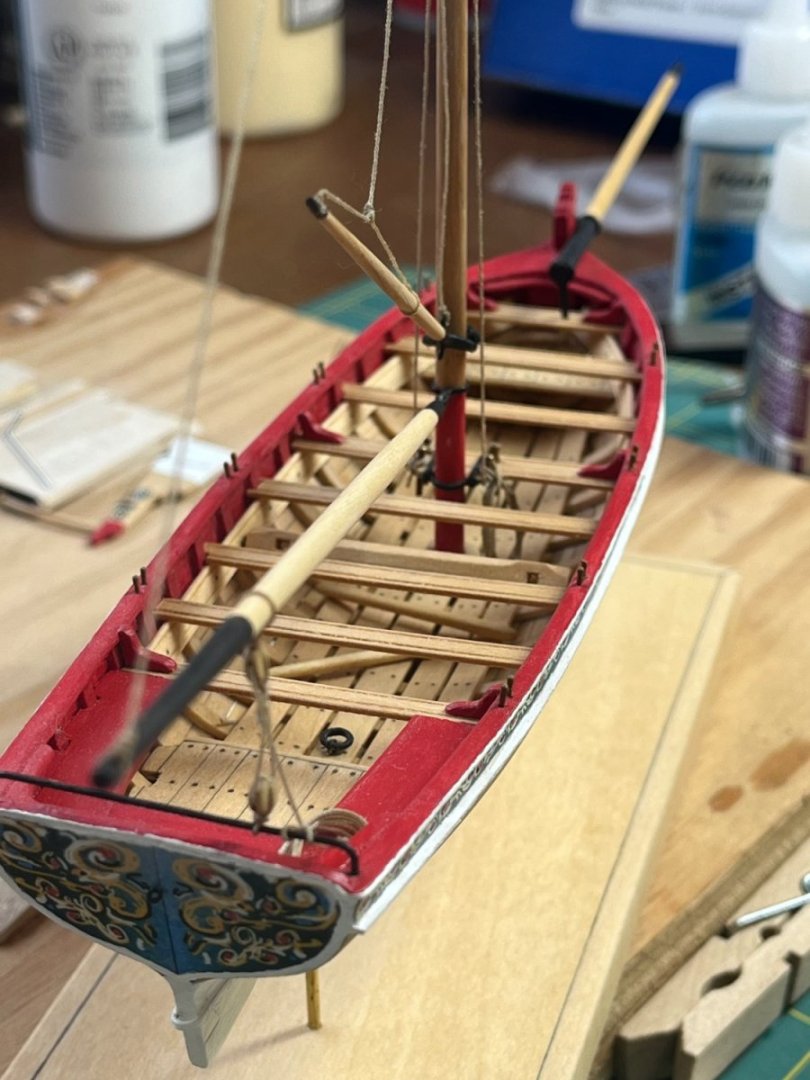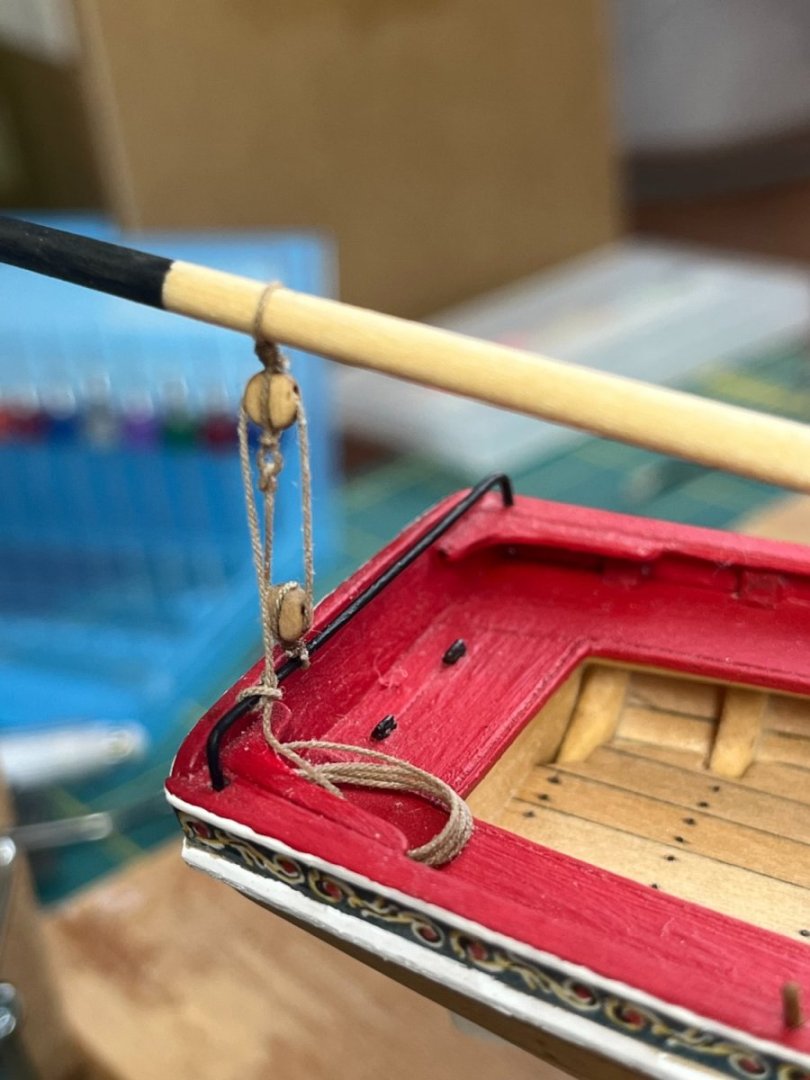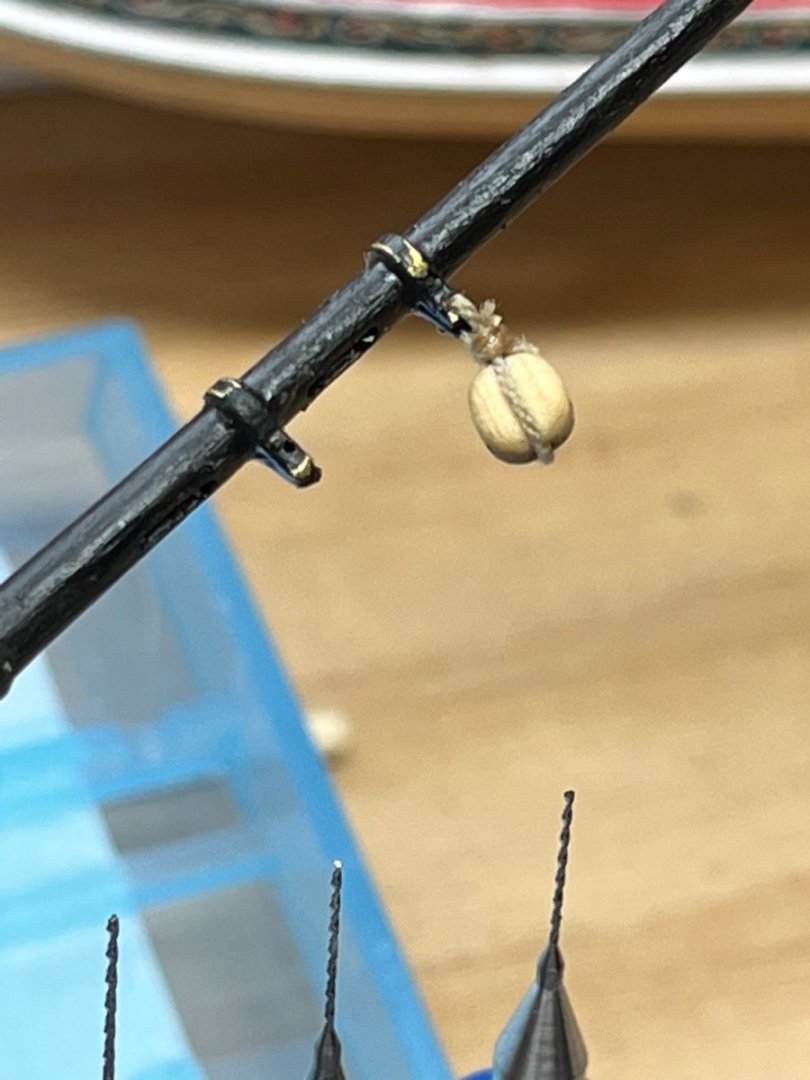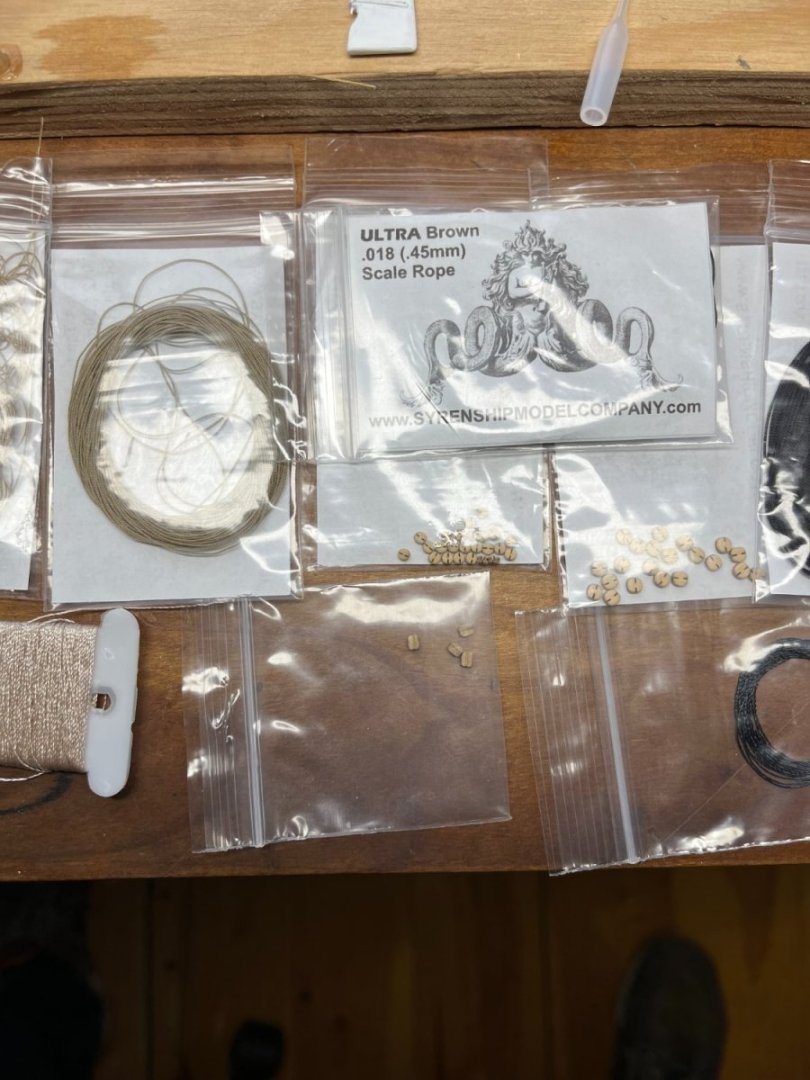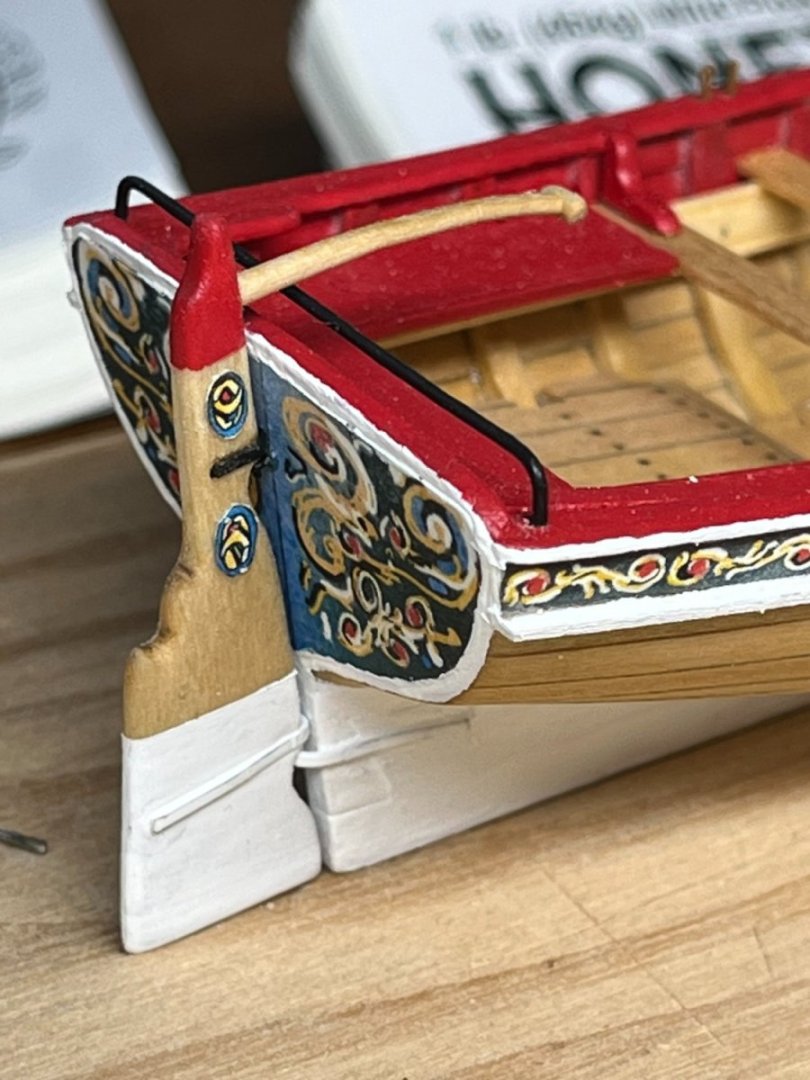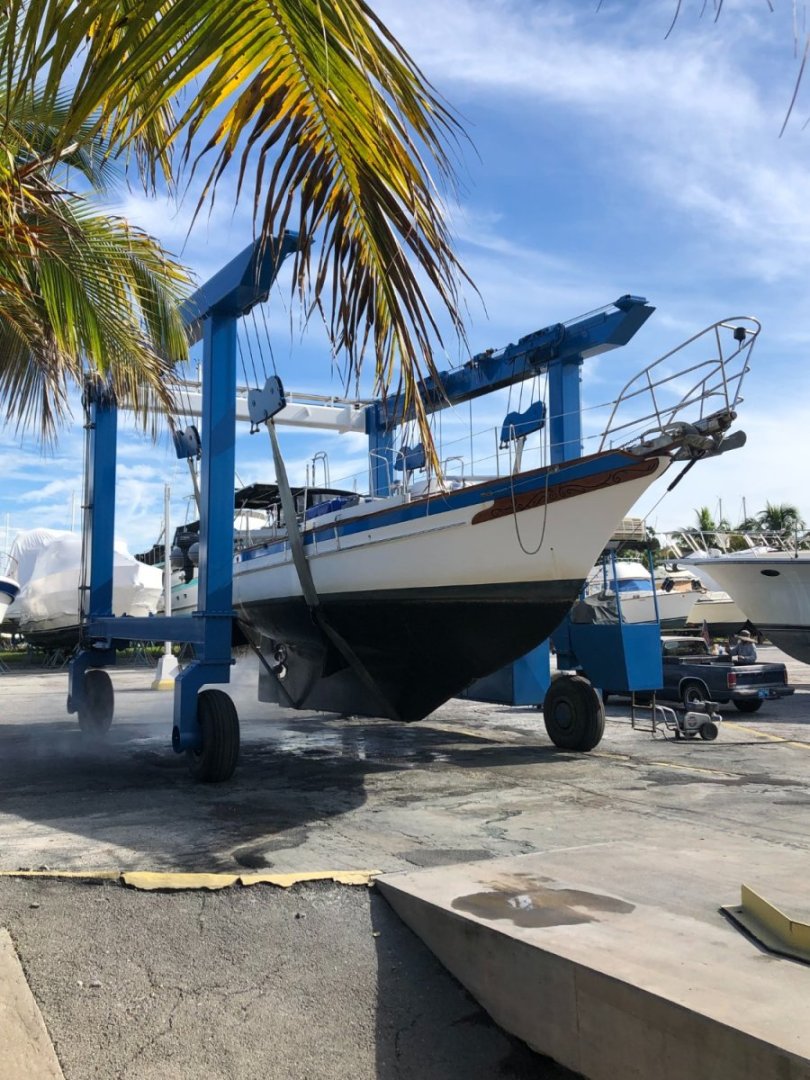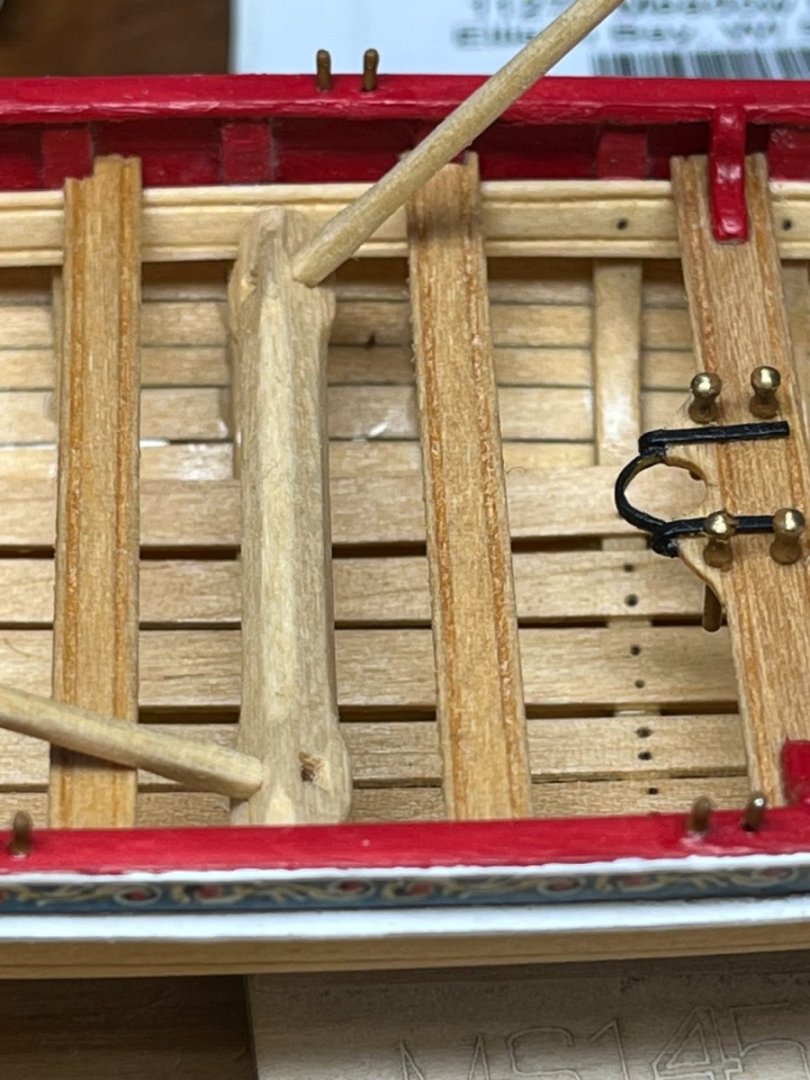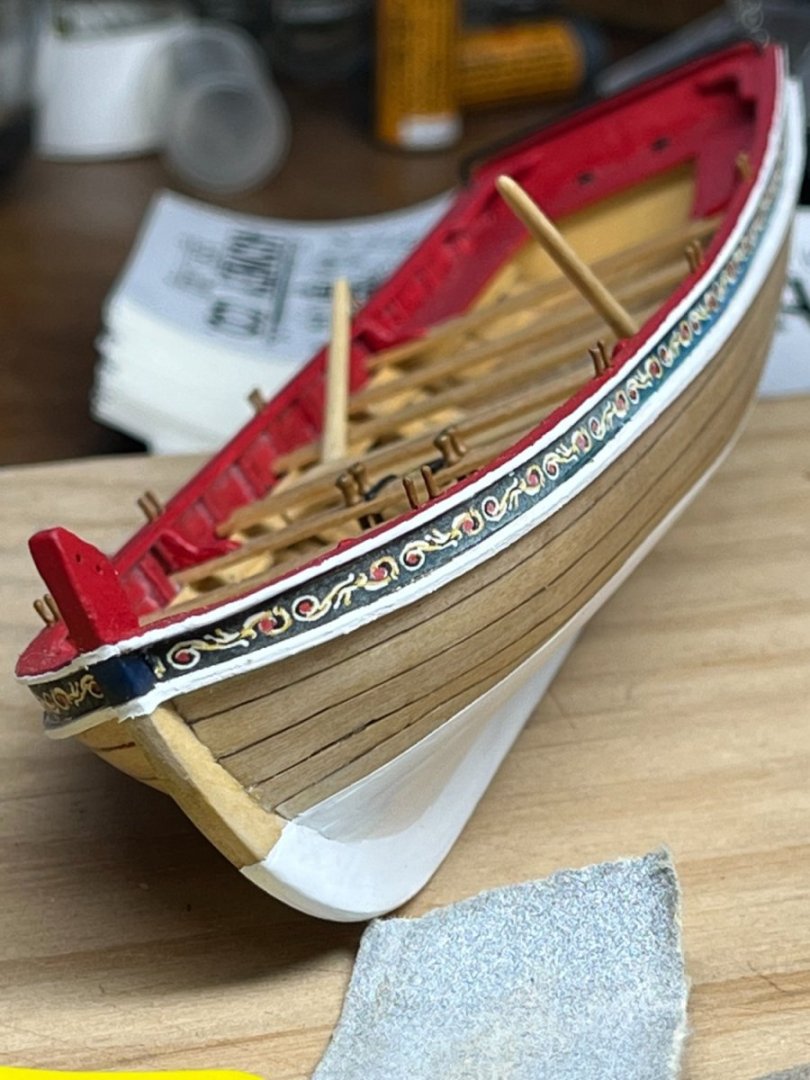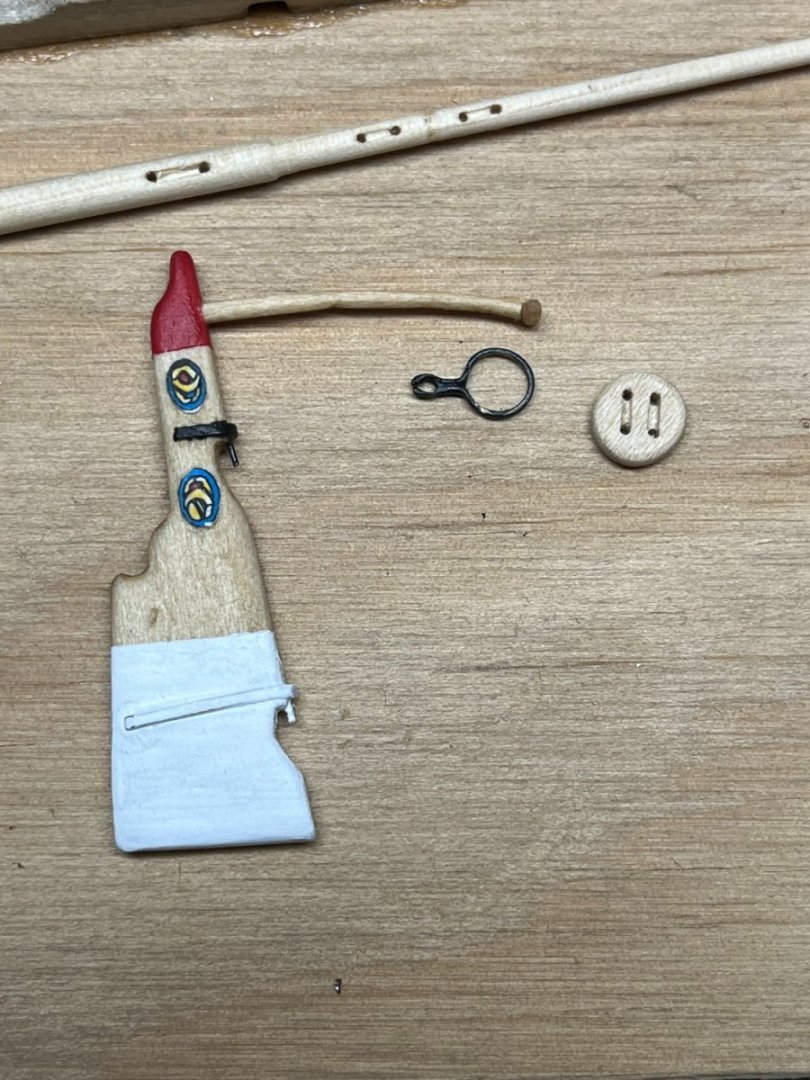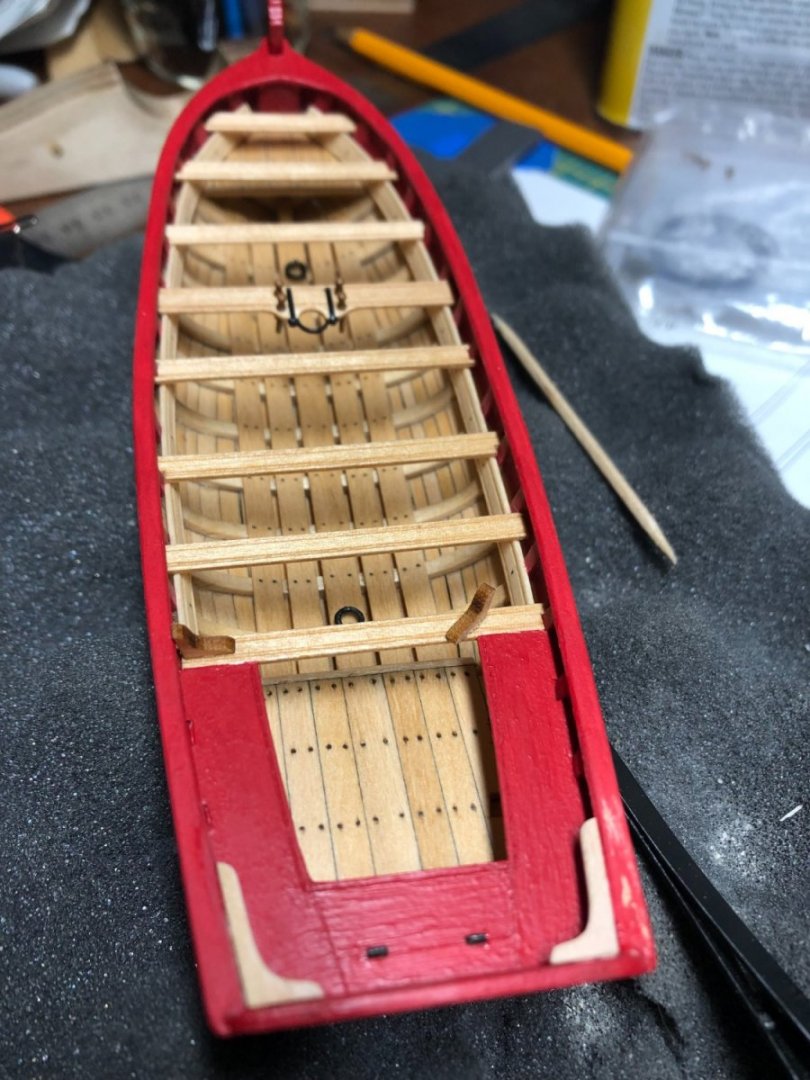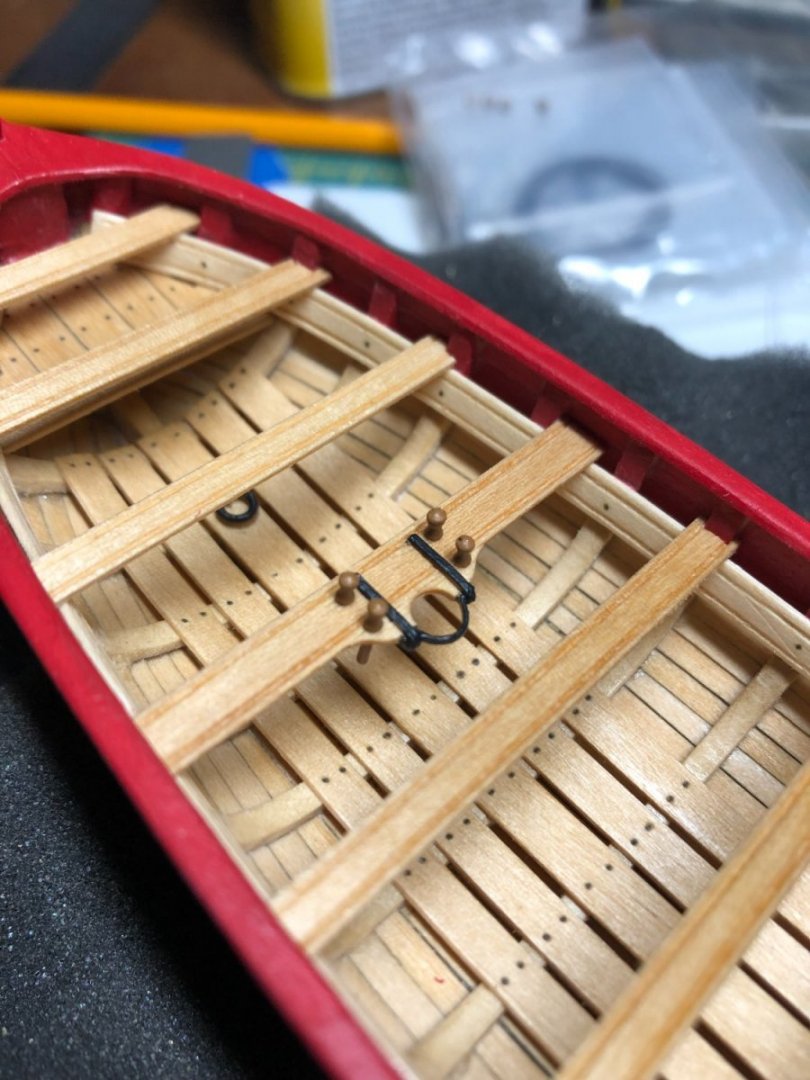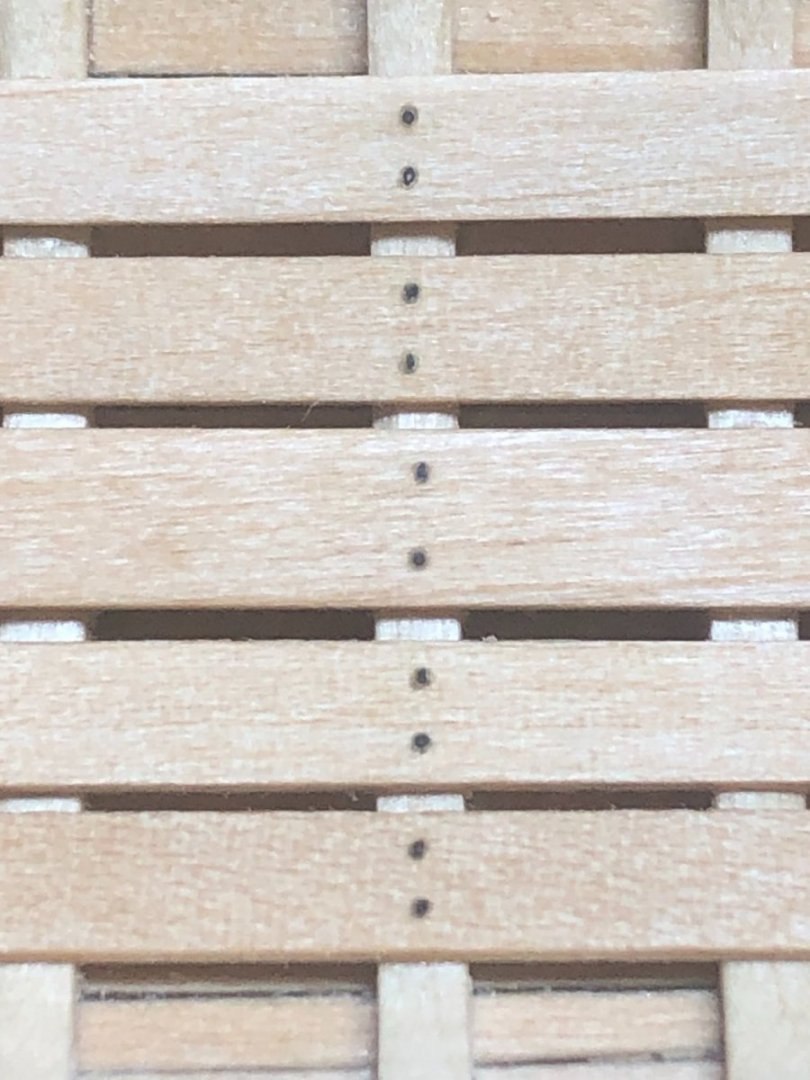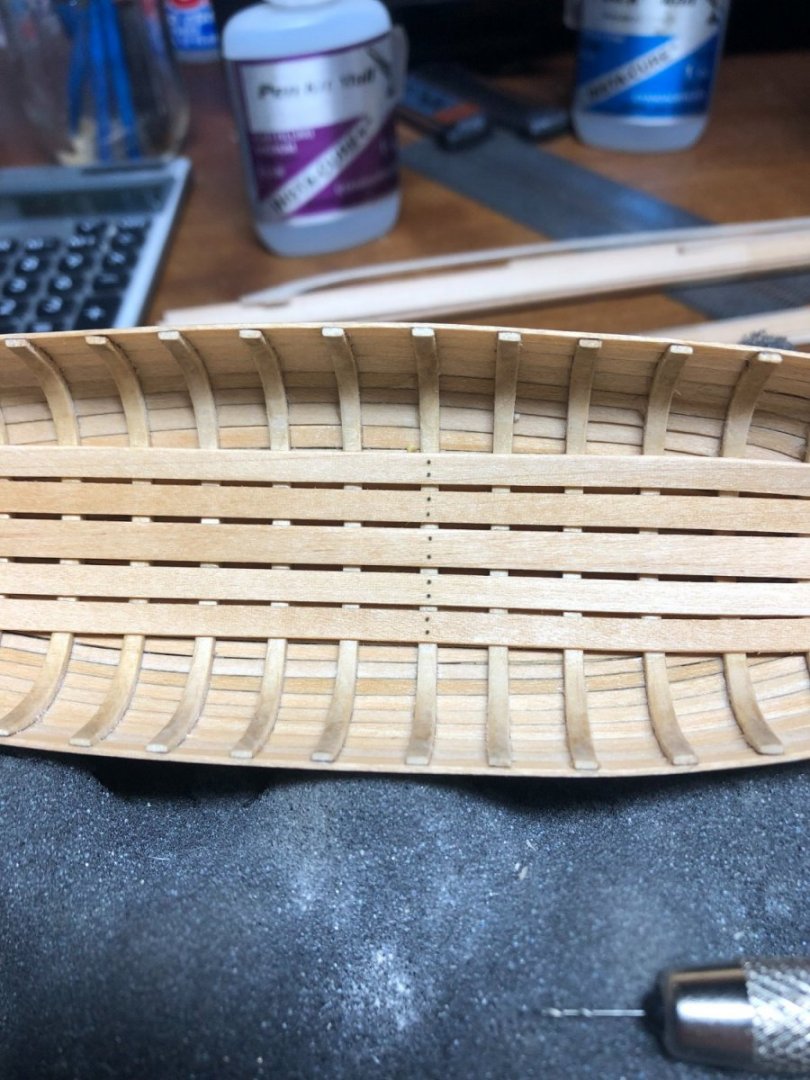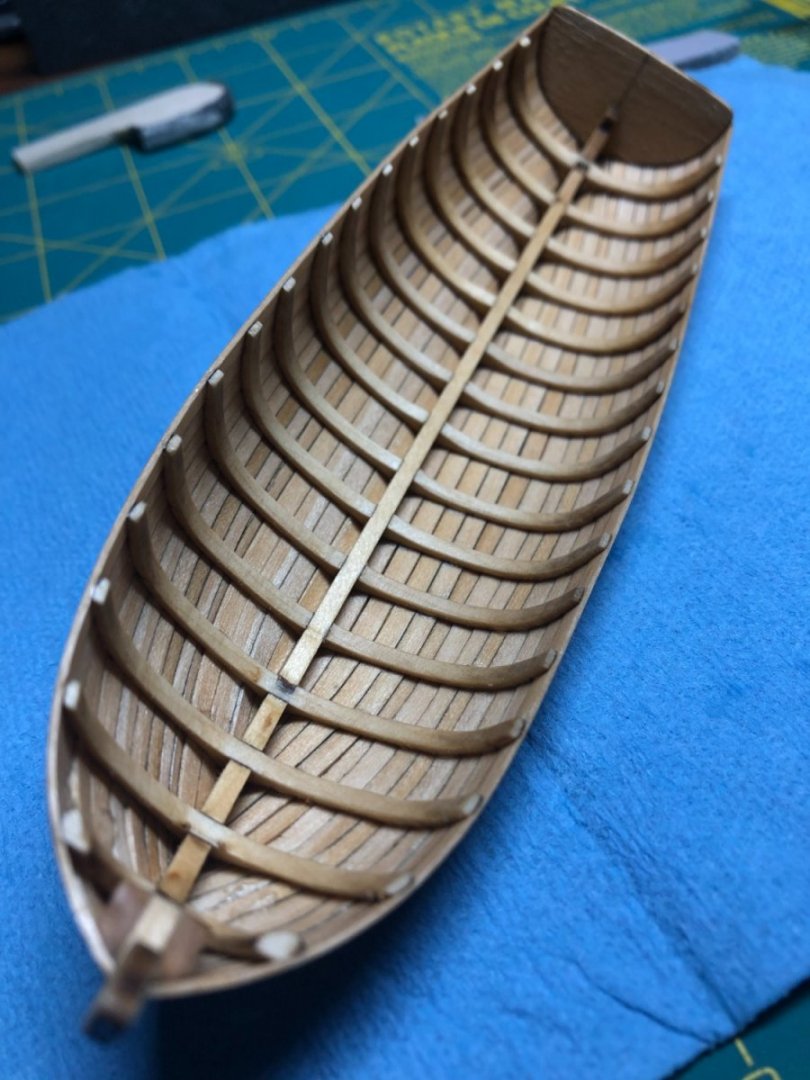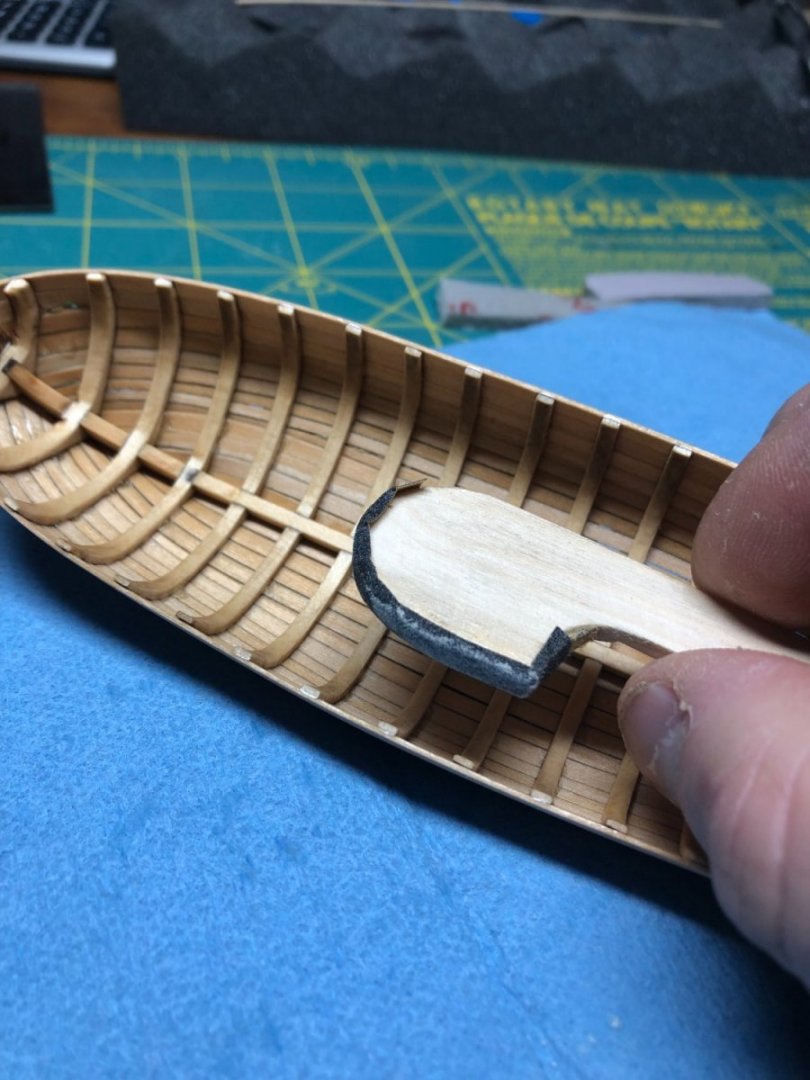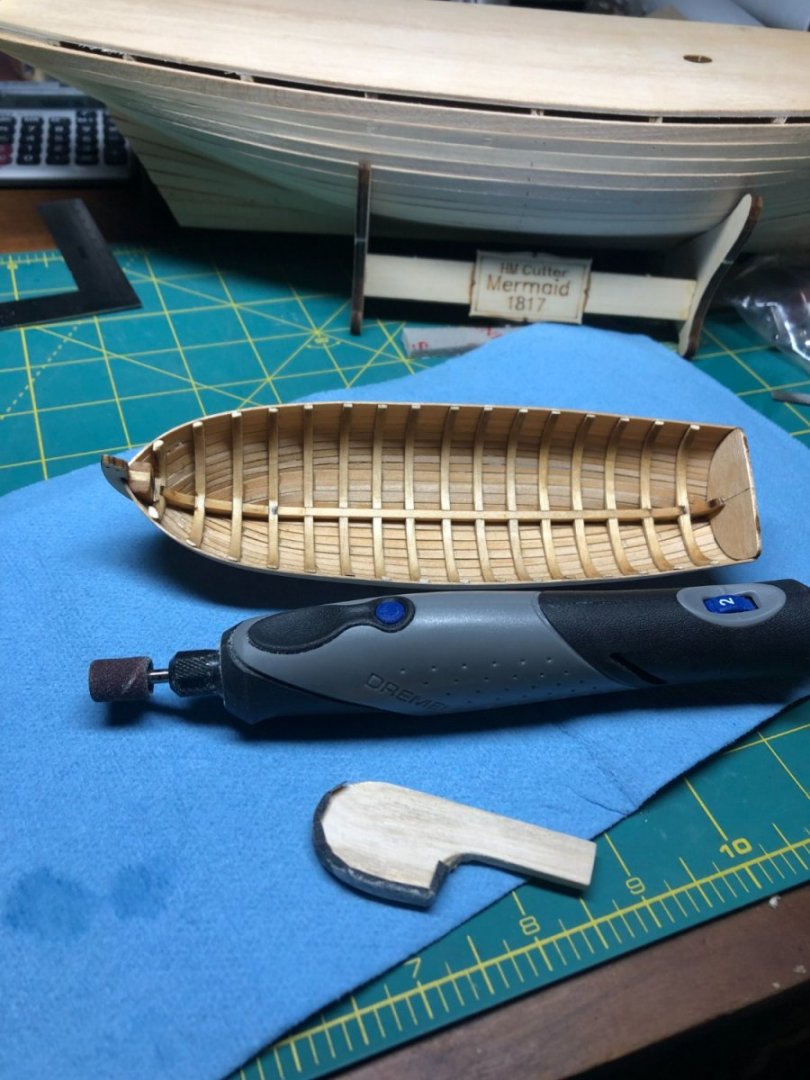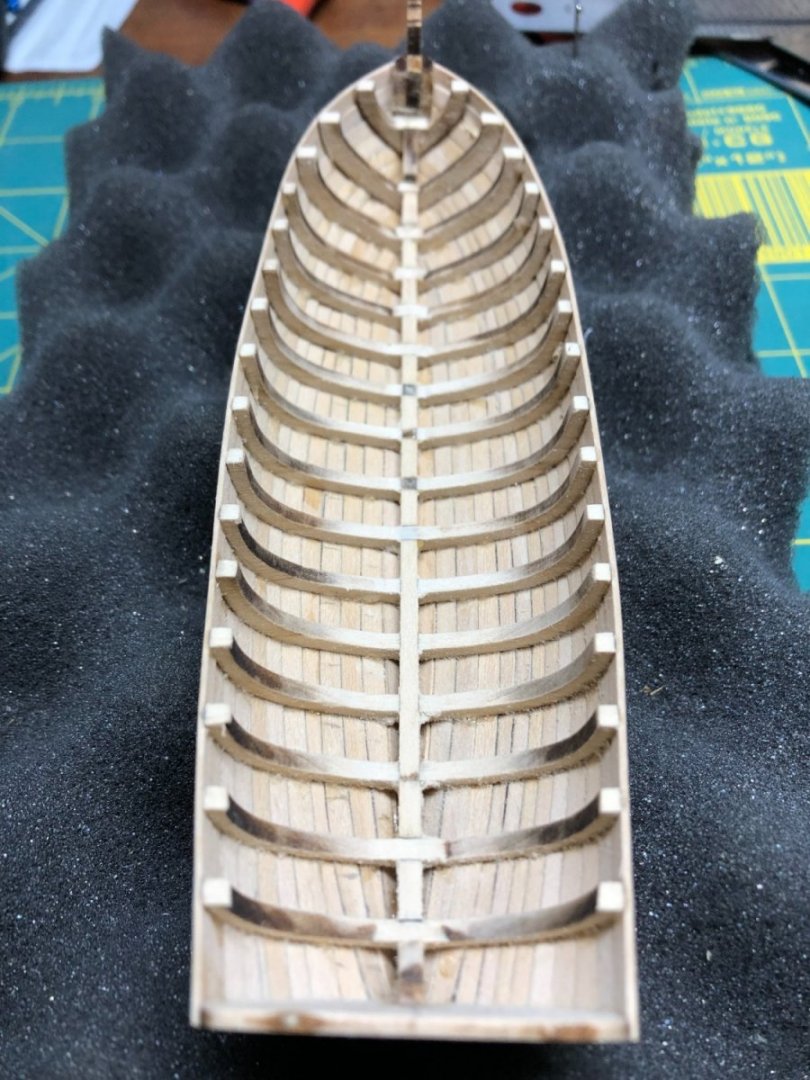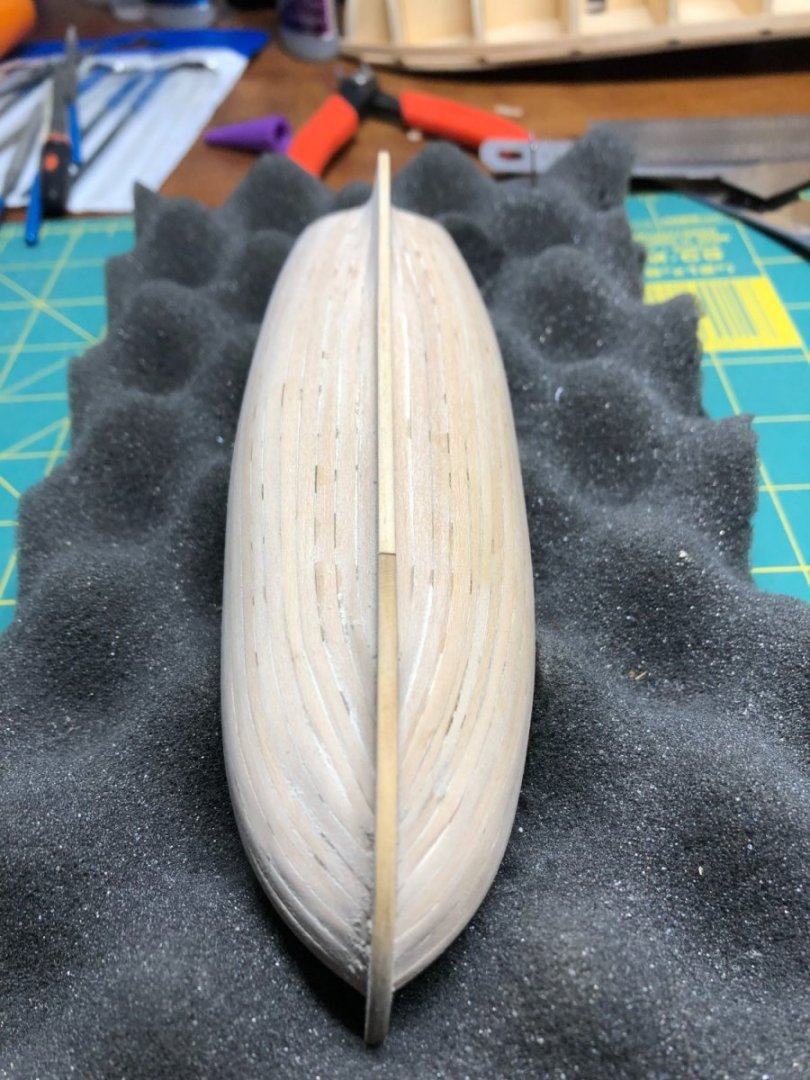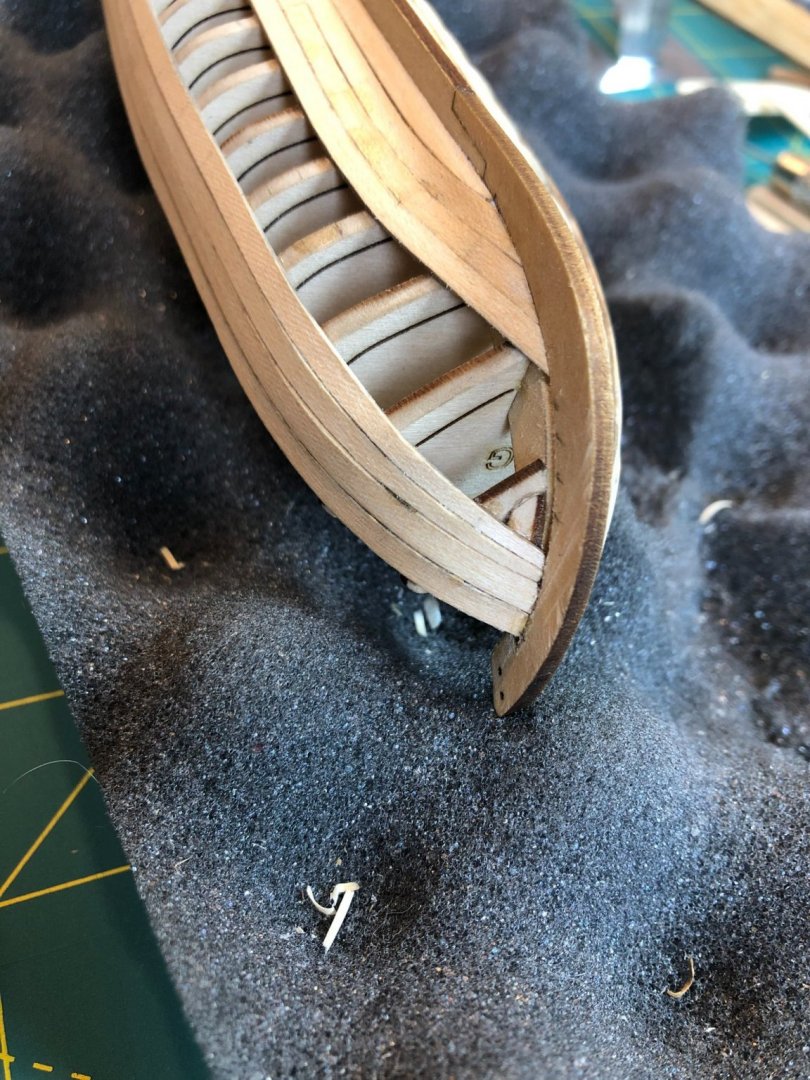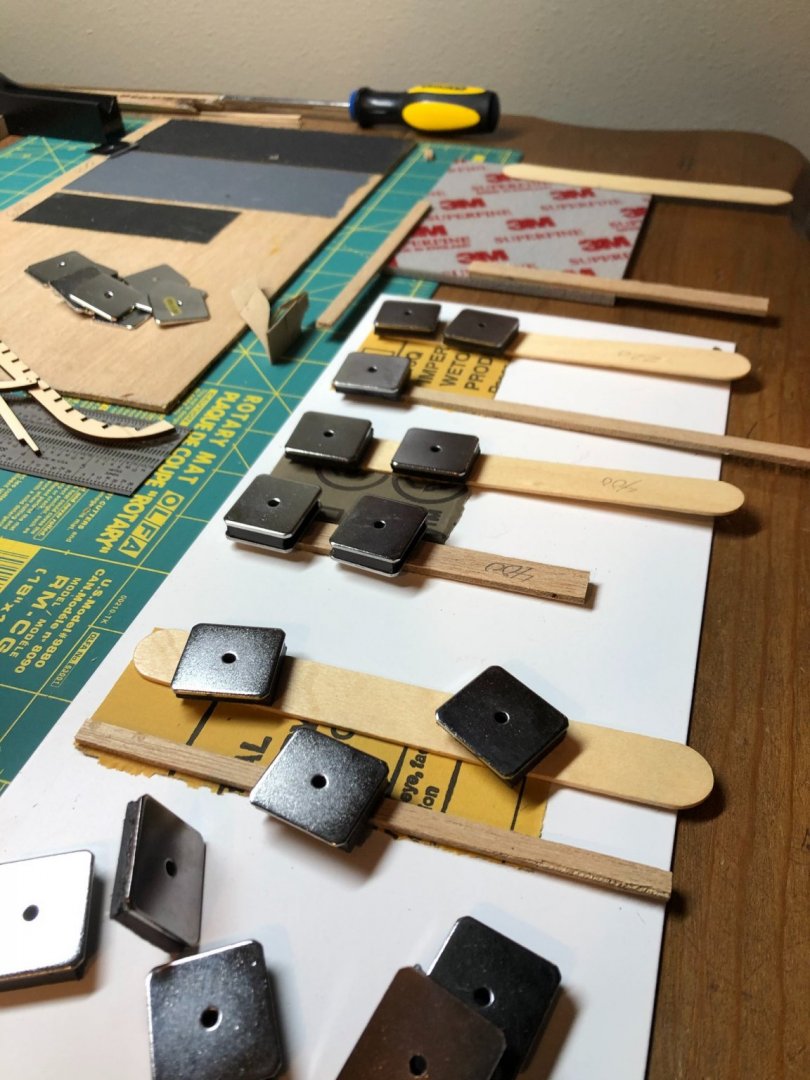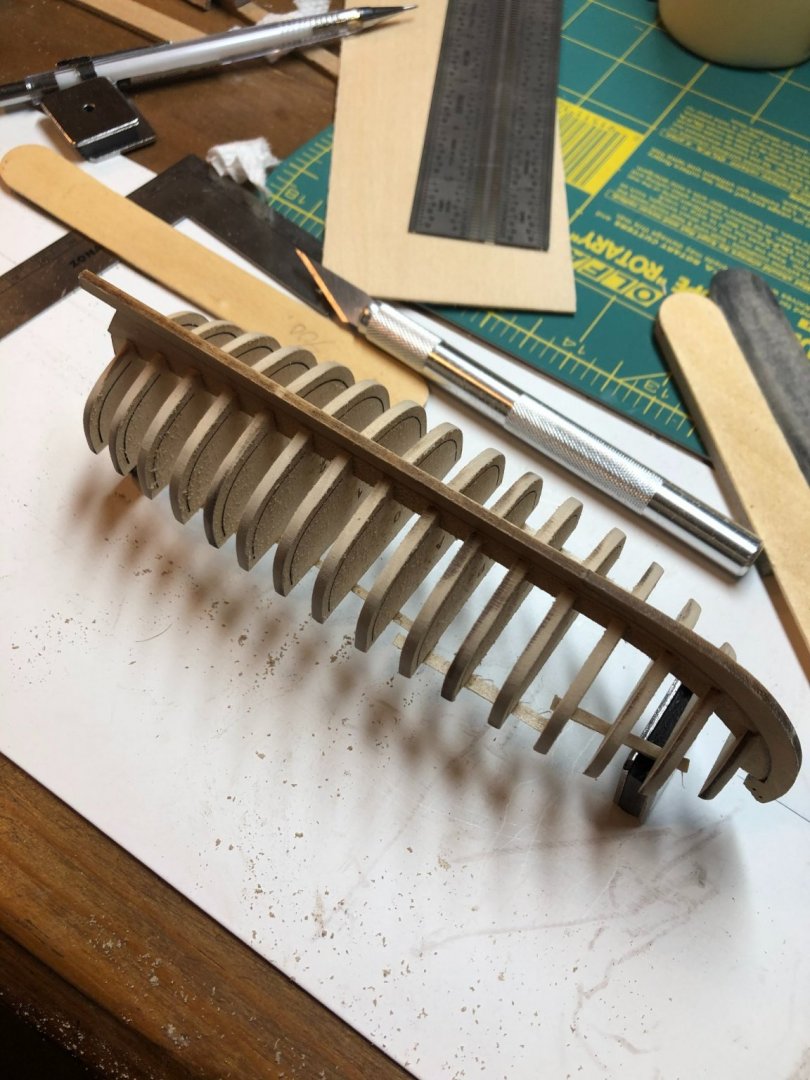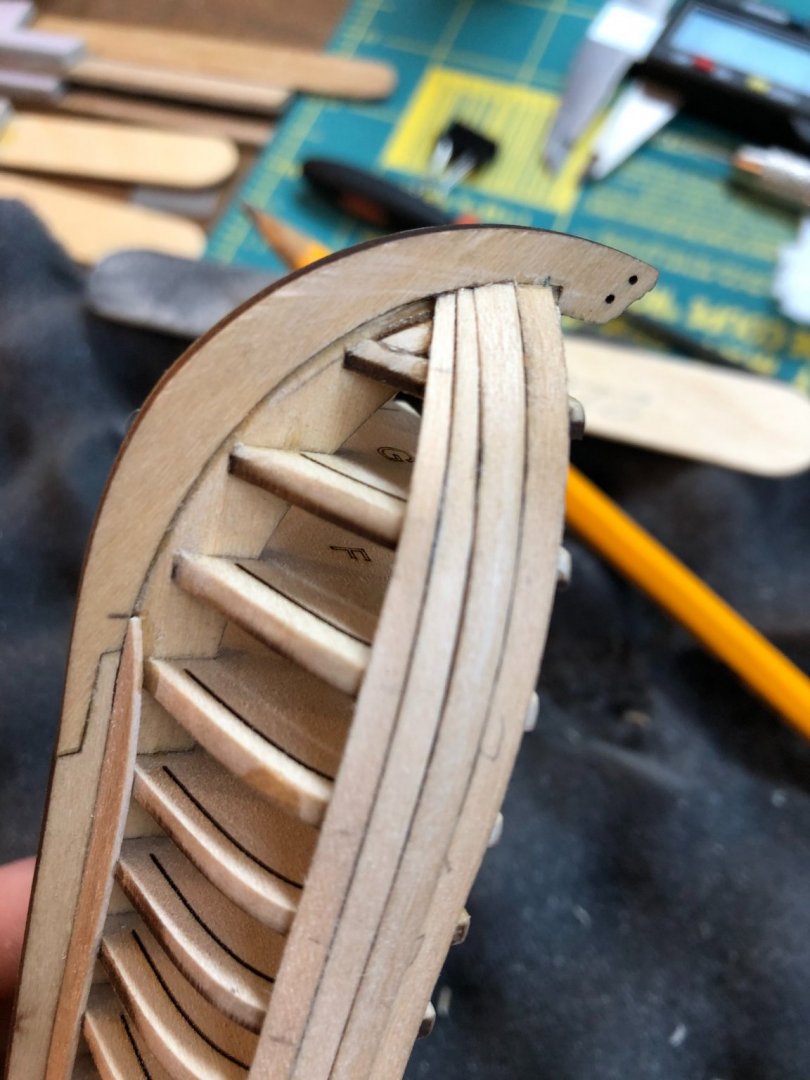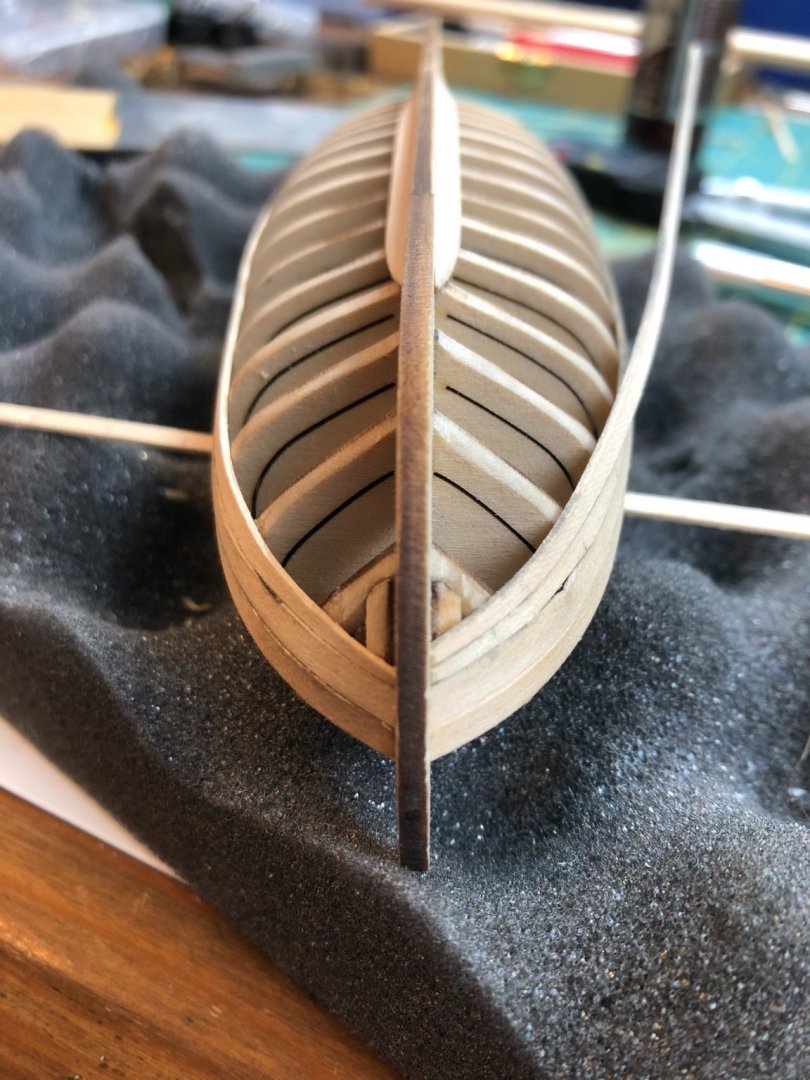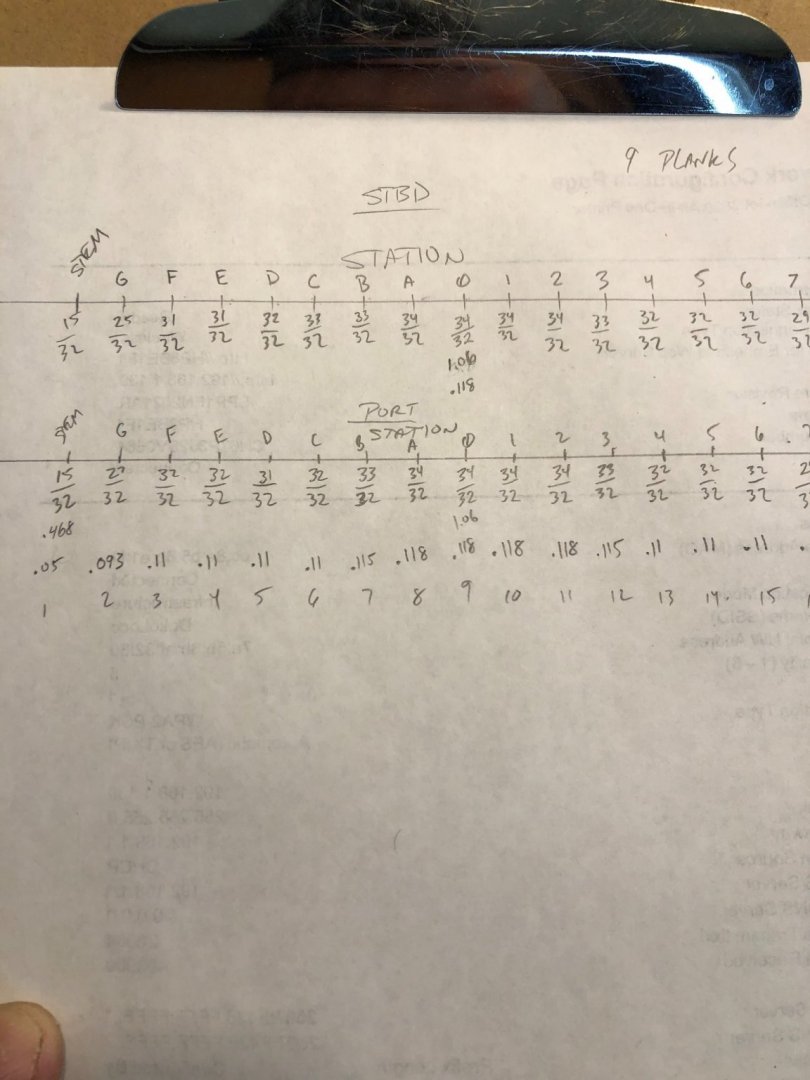-
Posts
12 -
Joined
-
Last visited
About FarmerJon

Profile Information
-
Gender
Male
-
Location
Sister Bay, Wi
Recent Profile Visitors
The recent visitors block is disabled and is not being shown to other users.
-
 Altduck reacted to a post in a topic:
18th Century Longboat by FarmerJon - FINISHED - Model Shipways - 1:48 Scale - first build
Altduck reacted to a post in a topic:
18th Century Longboat by FarmerJon - FINISHED - Model Shipways - 1:48 Scale - first build
-
 Cathead reacted to a post in a topic:
18th Century Longboat by FarmerJon - FINISHED - Model Shipways - 1:48 Scale - first build
Cathead reacted to a post in a topic:
18th Century Longboat by FarmerJon - FINISHED - Model Shipways - 1:48 Scale - first build
-
 CiscoH reacted to a post in a topic:
18th Century Longboat by FarmerJon - FINISHED - Model Shipways - 1:48 Scale - first build
CiscoH reacted to a post in a topic:
18th Century Longboat by FarmerJon - FINISHED - Model Shipways - 1:48 Scale - first build
-
 CiscoH reacted to a post in a topic:
18th Century Longboat by FarmerJon - FINISHED - Model Shipways - 1:48 Scale - first build
CiscoH reacted to a post in a topic:
18th Century Longboat by FarmerJon - FINISHED - Model Shipways - 1:48 Scale - first build
-
 aliluke reacted to a post in a topic:
18th Century Longboat by FarmerJon - FINISHED - Model Shipways - 1:48 Scale - first build
aliluke reacted to a post in a topic:
18th Century Longboat by FarmerJon - FINISHED - Model Shipways - 1:48 Scale - first build
-
 Ryland Craze reacted to a post in a topic:
18th Century Longboat by FarmerJon - FINISHED - Model Shipways - 1:48 Scale - first build
Ryland Craze reacted to a post in a topic:
18th Century Longboat by FarmerJon - FINISHED - Model Shipways - 1:48 Scale - first build
-
 bruce d reacted to a post in a topic:
18th Century Longboat by FarmerJon - FINISHED - Model Shipways - 1:48 Scale - first build
bruce d reacted to a post in a topic:
18th Century Longboat by FarmerJon - FINISHED - Model Shipways - 1:48 Scale - first build
-
 JacquesCousteau reacted to a post in a topic:
18th Century Longboat by FarmerJon - FINISHED - Model Shipways - 1:48 Scale - first build
JacquesCousteau reacted to a post in a topic:
18th Century Longboat by FarmerJon - FINISHED - Model Shipways - 1:48 Scale - first build
-
Alright the temperature has dropped the snow is flying and its dark at 1600. Time to get back to it and get this longboat into a display case. Its only taken 3 years haha. This has been a wonderful introduction to the hobby that will be lifelong for me. I cant wait to continue my education and improve my building skill. Last winter I did alot of sailing around florida on my 1:1 ship with the family. Launch and haulout this year was especially grueling at the marina I work at. It is very nice to have a winter with no big plans and a more reasonable work schedule. I should be able to get alot of shipbuilding under my belt. I have been working on the rigging and really enjoying the process. The main hurdle has been making a convincing siezing knot for the blocks and creating natural looking line hanks. Its interesting coming from a nautical background and looking at the knots used in model shipbuilding. Im finding some overlap so thats been helpful. The siezing seems to be accomplished best with either a barrel knot without the bight or a wip finish. In 1:1 a wip finish would be used to finish the bitter end of line to prevent fraying. The wip finish has been very difficult to make look scale with .008 syren rope so I have been doing the barrel. If anybody knows a better knot for siezing let me know. Another knot I have found useful when connecting line to line in the case of the gaff halyard is a trilene knot. Rope hanks that actually look right and convince me that gravity exists on my model have been more difficult. Its hard to make the line droop correctly. I found Tom Laurias youtube on the subject a helpful starting point. Then I ran into glbarlow build log on the Cheerful. He has the best looking hanks I have seen anybody make yet and Im going to make a jig similar to his this afternoon.
- 25 replies
-
- 18th Century Longboat
- Model Shipways
-
(and 2 more)
Tagged with:
-
 Tigersteve reacted to a post in a topic:
18th Century Longboat by FarmerJon - FINISHED - Model Shipways - 1:48 Scale - first build
Tigersteve reacted to a post in a topic:
18th Century Longboat by FarmerJon - FINISHED - Model Shipways - 1:48 Scale - first build
-
 Cathead reacted to a post in a topic:
18th Century Longboat by FarmerJon - FINISHED - Model Shipways - 1:48 Scale - first build
Cathead reacted to a post in a topic:
18th Century Longboat by FarmerJon - FINISHED - Model Shipways - 1:48 Scale - first build
-
Okay making progress again. The drill bit set recommended by Cisco made a seemingly impossible job a breeze. For 30$ delivered you get a set #71-#80 These will be indispensable in the future and I will likely be buying more from Drill Bit City. My first seizing or whipping? is complete and I'm happy with the results. I used a line whipping knot that we used in the military to finish the bitter end of line. I did a lot of googling on how to fasten this block and it was never totally clear, so that's what I came up with. Its a little "hairy" in the photo as I tried to use a nail clipper at first and it didn't cut well. Slight tension on the string and a sharp blade seemed the best way. I will clean it up after I've locked it with some glue. Not sure what to use though? White glue, CA, a coat of Tung oil? What do most use for this? I received all my rope and blocks from Syren the other day. When you compare these parts to what is supplied in the kit its a massive upgrade in scale realism. I'm glad I did this on my first build. I have already starting to swap out all the blocks and line in my kits in waiting on the shelf. Thanks Cisco for the clutch advice.
- 25 replies
-
- 18th Century Longboat
- Model Shipways
-
(and 2 more)
Tagged with:
-
Thanks Cisco this looks like it will do the trick! They look like a great vender for everything drilling as well. 20$ for the kit you have in the photo seems very fair. I will update after they arrive and I give it another go. Thanks again.
- 25 replies
-
- 18th Century Longboat
- Model Shipways
-
(and 2 more)
Tagged with:
-
Okay this build is not dead! I'm in the third winter of work and making good progress. Frieze installation went smoothly however I should have painted the transom white before applying the frieze. For some reason I applied it first then Cut in the edges with a fine brush. I did the best I could but its a bit ragged to my eye. The rudder didn't present any specific challenges. I did make a bit of a mistake by not keeping the pintle and gudgeon straps level with each other. I did add chunk of wood to the end of the tiller ...... for ergonomic reasons. Everyone can appreciate the feel of well crafted tiller in hand. Another mistake was not filling the gaps in my planking with some wood filler. Small amounts of white paint crept inside the seams and are visible from the inside of the hull......... annoying. Its taking me a long time to complete this model with a young family and a 1:1 ship to maintain. Im loving the process though and Im always drooling over all the other kits available. I imagine a large glass case full of completed ships. I have hit one snag. I have begun building up the spars, but have been unable to successfully drill a whole through the strapping? Ive attempted punching the start with a pin then using the pin vice, and using the dremel to no effect. The bit always walks out of the whole. Anybody have any tricks for this? Is it my low quality bits maybe? Im using a 1/64 drill bit does that seem right?
- 25 replies
-
- 18th Century Longboat
- Model Shipways
-
(and 2 more)
Tagged with:
-
Still plugging away. Several hurdles cleared and some new skills acquired. Working the miniature metal straps into shape was very satisfying, but highlighted the need for some specialized tools..... basically standard needle nose pliers are not going to cut it! Im looking at the jewelers plier set from Micromark and a set of quality tweezers. The painting that I was worried about went very smooth a mix of free handing and Tamiya tape worked great. Thanks Cathead and Ryland. One minor detail I noticed is the laytex paint from ModelExpo doesn't like to stick to metal parts and is very soft in general. Maybe prepping metals with acetone would help? Im also noticing that I can not control the appearance of brush strokes. I guess an airbrush might be the answer. Looking forward my plan was to purchase new lines, blocks, and deadeyes from Syren. This seems to be universally recommended everywhere I read. Only issue is Syren doesn't appear to carry the 1/8 or 3/32 single blocks used on the Longboat. They do however carry the needed lines and deadeyes. Those hinges are about my limit for how small I can work!
- 25 replies
-
- 18th Century Longboat
- Model Shipways
-
(and 2 more)
Tagged with:
-
Thanks Cathead and Ryland. I will order some of that tape and also try freehanding inside the hull. The tape should be very important on long straight lines I'm assuming. Made a little more progress and did an experiment. I see lots of models getting treenails, and the community seems divided on using them. I was curious to try. The scale seems okay and i do like the look.
- 25 replies
-
- 18th Century Longboat
- Model Shipways
-
(and 2 more)
Tagged with:
-
Progress has been made! Completed the sanding of the frames. A steady hand and patience was the name of the game. I found the dremel stylo was indispensable. I used the "j" ish shaped sanding tool suggested by Cisco to fair and smooth the frames. I gave the model a Tung oil finish suggested by many and I really like the results. Ive been through several build logs for this boat and many others, but I havent found any information on masking for painting. Its an extremely small space to work around especially taping off the frames on the inside of the boat for the red paint. Do most people use normal tape? It seems like bleed through will happen at all the little inside corners? I have on hand Frogtape, Scotch fine line pinstriping tape, and green scotch masking tape. Any suggestion? Im in no rush because my paint still hasnt arrived yet....... postal service.
- 25 replies
-
- 18th Century Longboat
- Model Shipways
-
(and 2 more)
Tagged with:
-
Cisco- Yea planking is the one skill that doesn't have anything in common with other carpentry/model making skills I possessed. It took completing the longboat to feel like I had a grasp on what Im supposed to do. I started planking the hull on my mermaid last night and its going perfectly. Understanding how to lay out the hull in bands and use tick strips is crucial. I know there is another level when you spiling to avoid clinker, and pre-bend each piece to perfection....... Im not doing that yet. Do you happen to have a photo of your J-shaped sanding implement? I made some tools that sound familiar but couldn't be effective with them. I went through your longboat images and would say despite how you feel about your planking job the outcome is a great looking model. I hope mine is half as good at completion. Cathead- Thank! do you have any recommendations on dremel bit that you found best?
- 25 replies
-
- 18th Century Longboat
- Model Shipways
-
(and 2 more)
Tagged with:
-
Finally back at it! I hope everyone is having a great new year. I think Im going to end up being a winter only ship modeler...... The longboat is back on the bench and I have completed the planking. Its been said before by others, but its worth repeating this doesn't seem like a beginner kit. No problem though I have learned a lot and Im happy with the result. After the first sanding it has cleaned up nicely. I intend to use a tung oil finish on the inside/outside of the hull before any painting happens. Anybody see a problem with that plan? The sanding of the frames is the next challenging task. I started by carefully chiseling/hand sanding, and quickly found the need for different tools. I ordered the dremel 2050-15 stylo any ideas on a preferred bit for getting to the frames effectively? I also see the MicroLux Micro Sander on the Micromark website. I haven't ordered that yet was hoping someone else could speak to the usefulness of this tool. I was considering moving forward with later parts of the build while I wait for tools/paints to arrive. I just happen to have a NIB HM Cutter Mermaid 1817 sitting in front of me so...............
- 25 replies
-
- 18th Century Longboat
- Model Shipways
-
(and 2 more)
Tagged with:
-
Thanks Ryland! I dont consider this "bad news" so no problem. Im just learning how to plank correctly mistakes are bound to happen. I have a couple different types of CA de bonder ordered and on the way. I will read up on the use of tick strips, and all the other articles on site while I wait. Thanks for the advice! -
- 25 replies
-
- 18th Century Longboat
- Model Shipways
-
(and 2 more)
Tagged with:
-
Thanks guys! I have been looking at your longboat build Ryland specifically to help figure out where I have one wrong with my planking. I'm sure now that I didn't calculate my planks correctly but still trying to figure out what the correct procedure actually is. It doesn't seem you can simply divide all station depths by your number of planks? I did this and my numbers prompted me to make those aggressively tapered planks at the top. That has resulted in needing 4 + planks at the stem and 3 fulls or 4 very narrow planks at frame 4-5. I think I have to de bond my skinny planks and try again. Im not having any trouble bending and shaping planks, but don't feel I have a reliable procedure for measuring/planning them out? Are most people just pencil marking them out on the frames ahead of time? Im thinking the spreadsheet method is the way to go Im just missing something. Guess its off to buy some CA debonder.......... haha Other lessons learned. -Pre stain all parts to get a more refined finish -Dont mark on any parts with pencil that will show -Bevel the inside edge of planks that have an outward bend so they marry up better
- 25 replies
-
- 18th Century Longboat
- Model Shipways
-
(and 2 more)
Tagged with:
-
FarmerJon changed their profile photo
-
Hello everybody after some time lurking around the forums Ive started my first model. Looking forward to sharing with everyone, and thanks in advance for any advice/training. Ive spent most my life on boats and ships so it seems natural I found my way to this hobby. It looks I haven't chosen the easiest kit for a beginner? Looking forward to getting to know everybody! Ive started by setting up my work space and making a variety of sanding sticks. Bulkheads installed and fairing process begun. I quickly learned that they aren't kidding about how important the accuracy of bulkhead alignment/precision of fairing. I already see some minor hard spots developing in my planked hull. Lesson learned. Planking is underway and seems to be going okay. The directions describe a process of dividing the measured frame depth by the number of planks you want to install. I measured to the nearest 1/32" and converted to decimal for using my calipers. Is this method correct? It looks okay but its hard to envision how it will end up.
- 25 replies
-
- 18th Century Longboat
- Model Shipways
-
(and 2 more)
Tagged with:
About us
Modelshipworld - Advancing Ship Modeling through Research
SSL Secured
Your security is important for us so this Website is SSL-Secured
NRG Mailing Address
Nautical Research Guild
237 South Lincoln Street
Westmont IL, 60559-1917
Model Ship World ® and the MSW logo are Registered Trademarks, and belong to the Nautical Research Guild (United States Patent and Trademark Office: No. 6,929,264 & No. 6,929,274, registered Dec. 20, 2022)
Helpful Links
About the NRG
If you enjoy building ship models that are historically accurate as well as beautiful, then The Nautical Research Guild (NRG) is just right for you.
The Guild is a non-profit educational organization whose mission is to “Advance Ship Modeling Through Research”. We provide support to our members in their efforts to raise the quality of their model ships.
The Nautical Research Guild has published our world-renowned quarterly magazine, The Nautical Research Journal, since 1955. The pages of the Journal are full of articles by accomplished ship modelers who show you how they create those exquisite details on their models, and by maritime historians who show you the correct details to build. The Journal is available in both print and digital editions. Go to the NRG web site (www.thenrg.org) to download a complimentary digital copy of the Journal. The NRG also publishes plan sets, books and compilations of back issues of the Journal and the former Ships in Scale and Model Ship Builder magazines.



